Industrial Waste Initiatives

Waste separation and recovery
(Yokkaichi Plant)
Since FY2001 (April 1, 2000 to March 31, 2001) , JSR has been implementing its goal of “zero waste”1 through activities that include prevention of waste materials, sorting of waste, and searches for recycling locations at all plants. In the period from FY2004 to FY2011, we made ongoing efforts that have enabled us to reach our goals in zero waste activities. About 87% of the total volume of generated waste materials is taken up by surplus sludge resulting from activated sludge treatment of wastewater and by coal ash generated in the coal boilers used for on-site power generation. Surplus sludge is recycled together with coal ash for use as cement materials. We are also promoting the recycling of bottles, cans, drums, paper, fluorescent lamps, dry cell batteries and organic waste, in addition to using waste oils and other materials as fuels. The final landfill volume in FY2011 came to 7 tons/year. In the future, we will strive to implement ongoing zero waste operations by further continuing our search for recycling locations and our other efforts.
1. The goal is to reduce the volume of final off-site waste buried at third-party landfills to less than 0.1% of the volume of waste generated
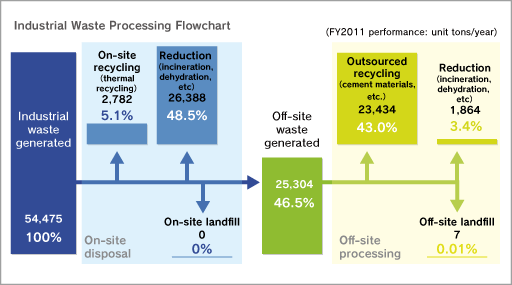

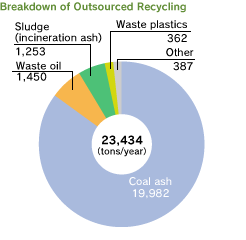
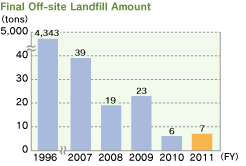
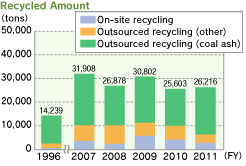
Promoting 3R to Reduce, Reuse and Recycle Packaging Materials
JSR has always been serious about environmental measures in the distribution and logistics workflow. Therefore, we promote 3R, (Reduce, Reuse, Recycle) to effectively utilize waste-free packaging materials and packaging containers.
JSR will actively engage in the following 3R activities for packing materials to promote recycling and effective use of resources.
- Reduce:
- Eliminating use of external cardboard boxes due to changes in packing container specifications, increasing the foaming ratio of foamed polystyrene to reduce packaging materials, reducing volumes and handling larger sizes of liquid transport containers.
- Reuse:
- Preventing breakage of steel box pallets used as the packing containers for synthetic rubber.
- Recycle:
- Searching for recycling locations for plastic bottles and polyethylene bags that are conventionally incinerated.
Water Consumption
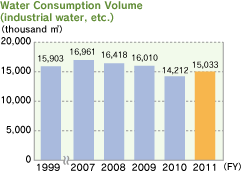
JSR uses industrial water, groundwater3, tap water and seawater (cooling water) as water resources. The water resource usage volume for FY2011 was approximately 15,000,000 cubic meters, which was approximately 800,000 cubic meters more than FY2010, mainly due to increased production. We effectively utilize about 25% of our water by recycling it through the various work processes at each plant.
3. Groundwater is not used at the Yokkaichi Plant and Chiba Plant
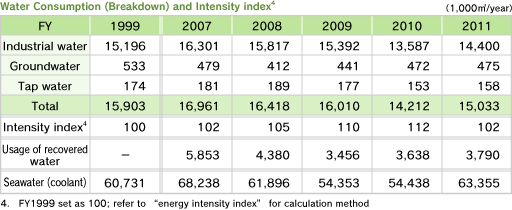
Return to the top of the page ▲

